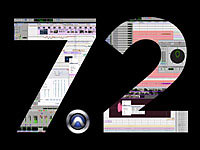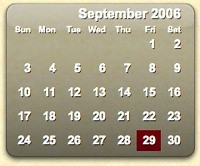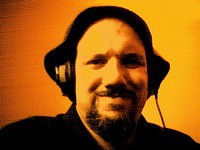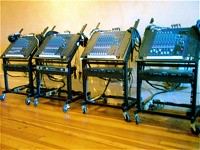Audio One presents a Pro-Tools 7.2 Clinic.
Come experience the power of Pro Tools HD 7.2 software. With a dramatically enhanced feature set — including the industry’s most comprehensive automation, extended video capabilities, revolutionary new workflows with multichannel field recorders, built-in dubber/stem recorder functionality, and the new SignalTools DigiRack™ metering plug-in — Pro Tools HD 7.2 is the indispensable upgrade for your Pro Tools|HD® system or ICON integrated console. Pro Tools HD 7.2 introduces a wealth of new features and enhancements designed in direct response to feedback from mixing and post professionals who use Digidesign systems every day.
When:
September 29th, 2006 at 6pm
Where:
Vibe56 Studio
56 Music Square West
Nashville, TN
Google Map
Please RSVP:
Audio One: (615) 341-0056
Hope to see you there…
Wednesday, September 13, 2006
Saturday, September 02, 2006
(un)Balancing Out The Buzz
We were finally able to nail down a hum problem that was present in our headphone stations. It was an amazingly frustrating problem to tackle, and we're very thankful to be on the other side of it now.
Initially we had considered the usual suspect of grounding issues related to power. After ground-lifting everything in the studio, it made no difference whatsoever. We also isolated the ground paths for the three separate styles of outlets we have in the studio.
We have seven headphone stations that allow each musician to maintain their own mix while tracking. Each station consists of a 12-channel mixer and an amplifier. If the piano player wants more acoustic guitar in his (or her) headphone mix, it's as simple as raising a single fader. Generally each musician wants to hear more of themselves, so this kind of set-up is often referred to as a "more-me" system.
The 12-channel mixers that we use for each headphone station consist of 4 mono channels and 4 stereo channels. The inputs for the mono channels are balanced, while the inputs for the stereo channels are unbalanced. The buzz we were experiencing was due to the fact that we were taking a balanced output (from ProTools) and trying to feed it into the unbalanced inputs of those stereo channels.
We purchased an 8-channel Hum Eliminator (stupid obvious product name) for each headphone station, and re-wired each station to incorporate it. These units are designed for taking an unbalanced signal and turning it into a true balanced signal. We needed it to do the exact opposite, so we hooked it up in reverse so that it was taking an balanced signal and making it unbalanced.
The end result is that the hum and buzz in our headphone system is gone. Mission accomplished.
Many thanks to John "Massey" Rohrer of Invisible Man Media Services for his help in tackling this issue.
Initially we had considered the usual suspect of grounding issues related to power. After ground-lifting everything in the studio, it made no difference whatsoever. We also isolated the ground paths for the three separate styles of outlets we have in the studio.
We have seven headphone stations that allow each musician to maintain their own mix while tracking. Each station consists of a 12-channel mixer and an amplifier. If the piano player wants more acoustic guitar in his (or her) headphone mix, it's as simple as raising a single fader. Generally each musician wants to hear more of themselves, so this kind of set-up is often referred to as a "more-me" system.
The 12-channel mixers that we use for each headphone station consist of 4 mono channels and 4 stereo channels. The inputs for the mono channels are balanced, while the inputs for the stereo channels are unbalanced. The buzz we were experiencing was due to the fact that we were taking a balanced output (from ProTools) and trying to feed it into the unbalanced inputs of those stereo channels.
We purchased an 8-channel Hum Eliminator (stupid obvious product name) for each headphone station, and re-wired each station to incorporate it. These units are designed for taking an unbalanced signal and turning it into a true balanced signal. We needed it to do the exact opposite, so we hooked it up in reverse so that it was taking an balanced signal and making it unbalanced.
The end result is that the hum and buzz in our headphone system is gone. Mission accomplished.
Many thanks to John "Massey" Rohrer of Invisible Man Media Services for his help in tackling this issue.
Subscribe to:
Posts (Atom)








